Intro
The importance of understanding creatinine clearance cannot be overstated, as it plays a crucial role in assessing kidney function and overall health. Creatinine is a waste product that is filtered out of the blood by the kidneys, and measuring its clearance rate can provide valuable insights into the efficiency of this process. In this article, we will delve into the world of creatinine clearance, exploring its significance, normal range, and the factors that can influence its values.
As we navigate the complexities of kidney function, it becomes clear that creatinine clearance is a vital indicator of how well the kidneys are performing their duties. By calculating the rate at which creatinine is cleared from the blood, healthcare professionals can gain a better understanding of the kidneys' ability to filter waste and excess fluids. This information is essential for diagnosing and managing kidney-related disorders, as well as for monitoring the effectiveness of treatment plans. With the rising prevalence of kidney disease, it is more important than ever to understand the significance of creatinine clearance and its normal range.
The normal range for creatinine clearance is typically considered to be between 90 and 120 milliliters per minute (mL/min) for adults, although this can vary depending on factors such as age, sex, and body size. It is essential to note that creatinine clearance is not a fixed value and can fluctuate over time due to various factors, including changes in kidney function, hydration levels, and overall health. By understanding the normal range for creatinine clearance, individuals can better appreciate the importance of maintaining healthy kidney function and take proactive steps to support their overall well-being.
Creatinine Clearance Calculation

Calculating creatinine clearance involves a series of steps, including measuring serum creatinine levels, estimating glomerular filtration rate (GFR), and adjusting for factors such as age, sex, and body size. The most commonly used formula for calculating creatinine clearance is the Cockcroft-Gault equation, which takes into account these variables to provide an estimated creatinine clearance value. This calculation is essential for assessing kidney function and can help identify potential issues before they become severe.
Factors Affecting Creatinine Clearance
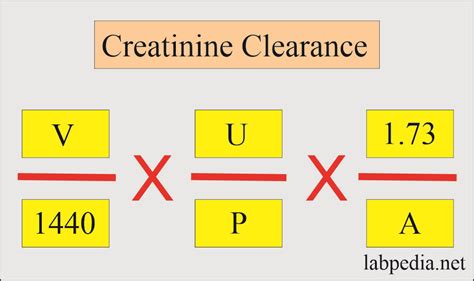
Several factors can influence creatinine clearance values, including age, sex, body size, and overall health. For example, older adults may experience a decline in kidney function, resulting in lower creatinine clearance values. Similarly, individuals with kidney disease or those taking certain medications may also experience fluctuations in their creatinine clearance rates. Understanding these factors is crucial for interpreting creatinine clearance results and developing effective treatment plans.
Normal Range for Creatinine Clearance
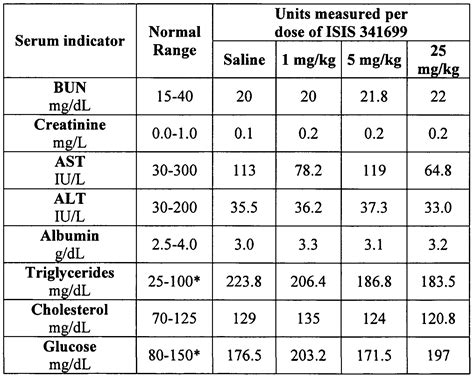
The normal range for creatinine clearance can vary depending on the individual and the laboratory conducting the test. However, in general, a creatinine clearance value of 90-120 mL/min is considered normal for adults. Values below 60 mL/min may indicate impaired kidney function, while values above 120 mL/min may suggest hyperfiltration or other underlying conditions. It is essential to note that creatinine clearance is just one aspect of assessing kidney function, and healthcare professionals may use a combination of tests and evaluations to determine the overall health of the kidneys.
Interpreting Creatinine Clearance Results
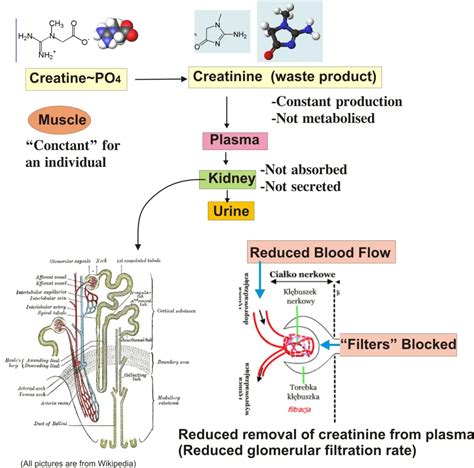
Interpreting creatinine clearance results requires a comprehensive understanding of the individual's medical history, laboratory values, and overall health. Healthcare professionals may use the following guidelines to interpret creatinine clearance results:
- Normal: 90-120 mL/min
- Mild impairment: 60-89 mL/min
- Moderate impairment: 30-59 mL/min
- Severe impairment: 15-29 mL/min
- Kidney failure: <15 mL/min By understanding these guidelines, individuals can better appreciate the significance of their creatinine clearance results and take proactive steps to support their kidney health.
Creatinine Clearance and Kidney Disease
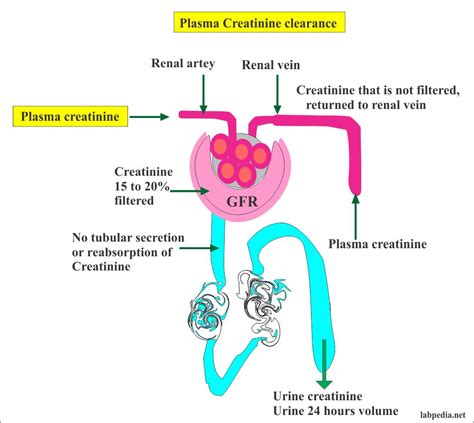
Creatinine clearance plays a critical role in diagnosing and managing kidney disease. By monitoring creatinine clearance values, healthcare professionals can track the progression of kidney disease and adjust treatment plans accordingly. Additionally, creatinine clearance can help identify potential complications, such as hyperkalemia or fluid overload, and guide the management of these conditions.
Kidney Disease Stages
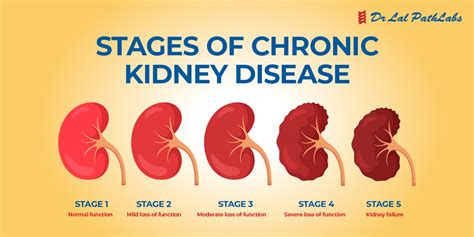
The National Kidney Foundation's Kidney Disease Outcomes Quality Initiative (KDOQI) has established a staging system for kidney disease, which is based on the glomerular filtration rate (GFR) and creatinine clearance. The stages are as follows:
- Stage 1: Kidney damage with normal or high GFR (>90 mL/min)
- Stage 2: Mild kidney damage with a GFR of 60-89 mL/min
- Stage 3: Moderate kidney damage with a GFR of 30-59 mL/min
- Stage 4: Severe kidney damage with a GFR of 15-29 mL/min
- Stage 5: Kidney failure with a GFR of <15 mL/min By understanding these stages, individuals can better appreciate the progression of kidney disease and the importance of early detection and intervention.
Maintaining Healthy Kidney Function
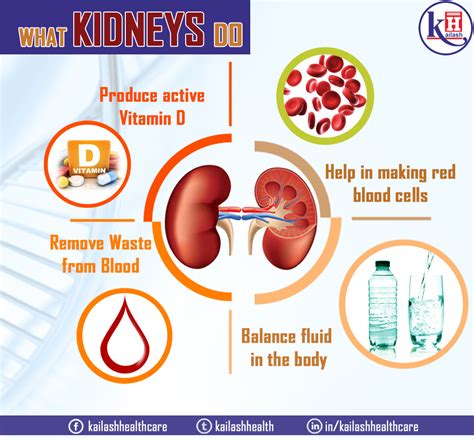
Maintaining healthy kidney function is essential for overall well-being, and there are several steps individuals can take to support their kidney health. These include:
- Staying hydrated by drinking plenty of water
- Eating a balanced diet that is low in salt, sugar, and unhealthy fats
- Exercising regularly to maintain a healthy weight and blood pressure
- Managing underlying medical conditions, such as diabetes and hypertension
- Avoiding medications that can harm the kidneys, such as certain pain relievers and antibiotics By taking these steps, individuals can help maintain healthy kidney function and reduce their risk of developing kidney disease.
Conclusion and Next Steps

In conclusion, creatinine clearance is a vital indicator of kidney function, and understanding its normal range and significance is essential for maintaining overall health. By staying informed and taking proactive steps to support kidney health, individuals can reduce their risk of developing kidney disease and promote healthy kidney function. We encourage readers to share their thoughts and experiences with creatinine clearance and kidney health in the comments section below. Additionally, we invite readers to explore our website for more information on kidney health and wellness.
What is the normal range for creatinine clearance?
+The normal range for creatinine clearance is typically considered to be between 90 and 120 milliliters per minute (mL/min) for adults.
What factors can affect creatinine clearance values?
+Several factors can influence creatinine clearance values, including age, sex, body size, and overall health.
How is creatinine clearance calculated?
+Creatinine clearance is calculated using the Cockcroft-Gault equation, which takes into account serum creatinine levels, age, sex, and body size.
